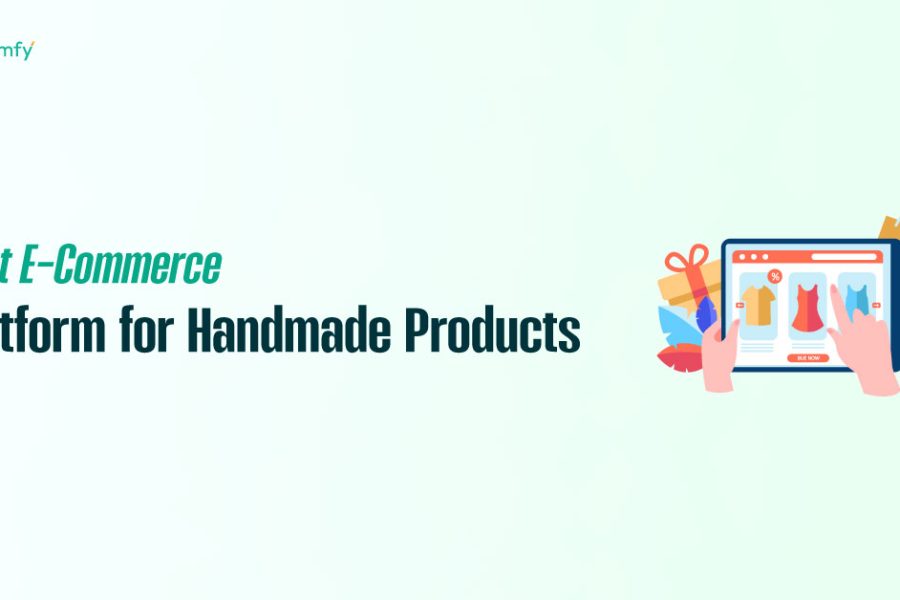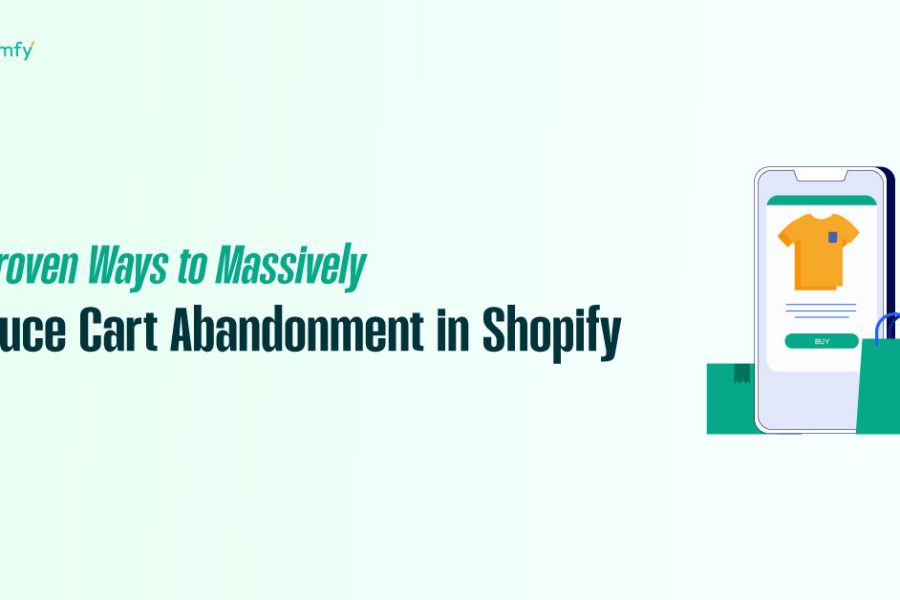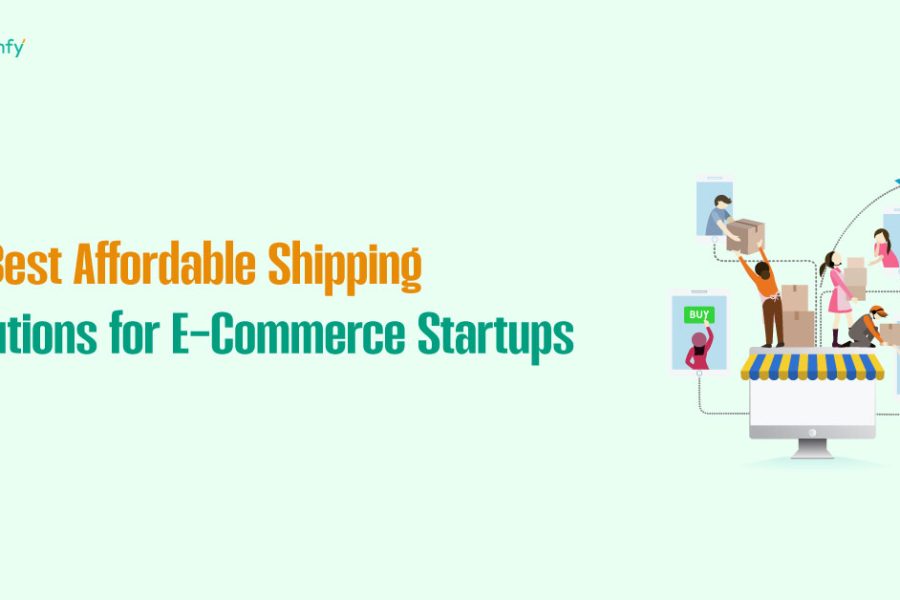E-commerce is bigger than ever, and thousands of entrepreneurs are asking the same question: how much does it cost to build an online store in 2025?
A budget-friendly store using platforms like Shopify or Wix can launch for as little as $500 to $2,000, while a mid-tier business with custom branding and marketing automation may cost $3,000 to $10,000. For a fully scalable, feature-rich operation with a Shopify Plus or a custom-built headless store, you need to spend at least $15,000 to $50,000+.
But don’t worry. If you’re building a dropshipping site, selling digital products, or opening a branded store, the actual cost may be less, as it depends on several factors, some obvious, others hidden. This complete breakdown will help you understand what you’re paying for and why. By the end, you’ll have a clear idea of what budget you need to create, launch, and grow your online store.
Table of Contents
ToggleWhat Influences the Total Cost of Building an Online Store?
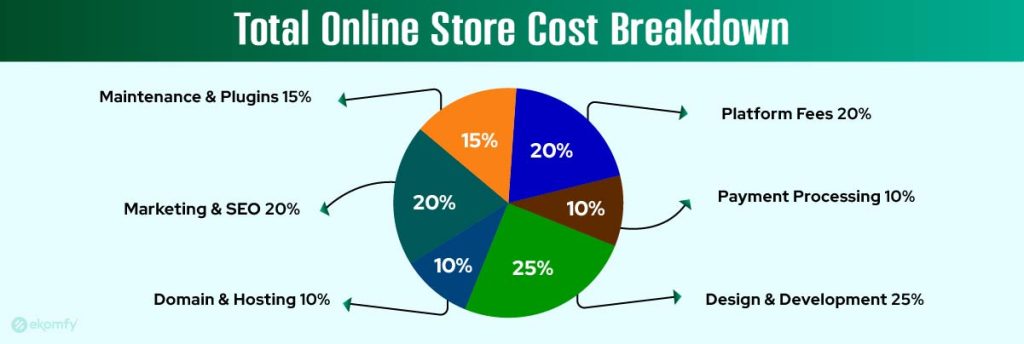
So, how much does it cost to build an online store in 2025? The answer isn’t a flat number because the price tag depends heavily on several variables. These include the platform you choose, the features you want, the number of products, the level of customization your design requires, and whether you’re hiring professionals or opting for a DIY approach.
Type of Ecommerce Platform
The type of ecommerce platform you choose will be your most significant cost driver. Hosted platforms like Shopify, Wix, or Squarespace often include hosting and templates but charge recurring monthly fees. On the other hand, open-source solutions like WooCommerce are free to use; however, you are responsible for covering the costs of hosting, security, and technical support yourself.
Custom-Built vs Website Builder vs SaaS
There’s the question of whether you’ll opt for a custom-built website or use a SaaS builder. Custom sites are designed from scratch and tailored to your exact business needs, but they come at a significantly higher cost. Website builders offer templates and drag-and-drop tools that lower the barrier for beginners.
Scope of Products and Inventory Size
Your product catalog also plays a major role in determining cost. A store with ten products and no variants will be easier and cheaper to launch than one with thousands of SKUs and variations. More products often mean more storage, plugins, and organizational tools.
Level of Customization and Design Complexity
The level of customization, such as advanced filtering, animations, interactive user experiences, or AI-driven search, drives up development time and cost. The fancier your wishlist, the more you’ll pay.
Platform Costs in 2025 for Shopify, WooCommerce, Wix, and Others
Platform choice isn’t just about convenience; it has a significant impact on your upfront and ongoing costs.
Shopify
Shopify remains one of the most popular options. In 2025, its pricing ranges from $39/month for the Basic plan to over $2,300/month for Shopify Plus. Shopify’s clean interface, app store, and built-in hosting make it an ideal choice for rapid growth. Transaction fees and app add-ons can quickly add up, increasing your total spend.
WooCommerce
WooCommerce, built on WordPress, is an open-source platform. It’s free to install, but far from free to operate. You’ll need to pay for quality hosting, SSL certificates, themes, and paid extensions. This can add up to hundreds or thousands of dollars annually. But if you want total control, WooCommerce offers flexibility unmatched by most hosted platforms.
Wix, Squarespace, and BigCommerce
Wix, Squarespace, and BigCommerce have gained popularity in 2025 due to their low entry costs and bundled features. Wix ecommerce plans now range from $27 to $59/month, Squarespace Commerce plans from $23 to $65/month, and BigCommerce from $39 to $399/month. These platforms are especially attractive for beginners due to their ease of use.
AI Website Builders and Headless CMS
AI website builders and headless CMS platforms have also emerged. Tools like Webflow Ecommerce, Durable, and ShopCircle are offering fast, AI-driven setups at monthly costs ranging from $19 to $199. These platforms are particularly good for modern, mobile-first websites with custom front-end design requirements.
Domain Name and Hosting for the Online Store’s Foundation
Every online store begins with a domain and a hosting plan. In 2025, registering a .com domain name typically costs between $10 and $20 per year. If you’re looking for a premium domain name or one that’s already registered, you may need to pay $500 or more. Domain privacy protection is also something you might consider, which adds another $5 to $15 per year.
Hosting varies depending on the type of infrastructure you choose. Shared hosting is the most affordable option, ranging from $5 to $15/month, but it typically lacks performance. VPS hosting offers more resources at $20 to $80/month. Cloud hosting services, such as AWS or Google Cloud, can cost anywhere from $30 to $200/month, depending on usage. Dedicated servers are the most powerful but cost upwards of $100/month.
Most ecommerce platforms include a free SSL certificate, but if you’re going self-hosted, expect to pay $30 to $150 annually. Tools like SiteLock, Cloudflare, and Let’s Encrypt offer additional layers of security. One new trend for 2025 is green hosting services powered by renewable energy, such as GreenGeeks or IONOS Eco Hosting, typically priced at $7 to $25/month.
Design and Development
Design is where your online store truly comes to life, but it’s also where costs can spiral if you’re not careful. If you’re using a DIY website builder, you can get by with a free or low-cost template. These often come bundled with platforms like Wix or Shopify. But if you’re aiming for a unique and professional look, you’ll either need to hire a freelancer or a website development agency.
Freelancer vs Web Development Agency
Freelancers usually charge between $25 and $100 per hour. They can help customize themes, add unique features, or even design a custom theme from scratch. Agencies, however, offer end-to-end services. Expect to pay anywhere from $3,000 to $30,000, depending on complexity, number of pages, and project scope.
Pre-made Themes vs Custom Design
Pre-made themes generally range from $0 to $200, while custom themes start at $1,000 and can go up to $5,000 or more. If you’re aiming for high-end UX/UI design, expect to pay even more; some designers charge $3,000 to $10,000 for a seamless mobile and desktop experience. Hiring a developer can also be part of this phase, with project-based fees from $1,500 to $15,000 and hourly rates from $30 to $150.
Essential Features You’ll Need and Their Costs
In 2025, online shoppers expect smooth, personalized experiences. This means you’ll need a variety of features that enhance usability and conversion rates.
Mobile Responsiveness and PWA Integration
A mobile-responsive design is non-negotiable. Progressive Web App (PWA) functionality, although optional, offers improved mobile performance and can cost between $200 and $1,500 for integration.
AI Chatbots and Customer Support Tools
AI chatbots and customer support tools are widely used today. Platforms like Tidio, Drift, or Gorgias charge between $20 and $250/month, depending on usage. These bots reduce cart abandonment and handle customer service round-the-clock.
Multi-Currency and Internationalization
If you plan to sell internationally, multi-currency support and language translation tools are essential for success. Most apps charge $20 to $100/month for this.
Backend Integrations
On the backend, tools for inventory management, CRM, and ERP systems may add another $29 to $199/month, depending on your business size.
Payment Processing and Gateway Fees (2025 Update)
When you sell online, each transaction comes with a fee. Stripe currently charges 2.9% plus $0.30 per transaction, PayPal charges 3.49% plus $0.49, and Square takes 2.6% plus $0.30. These fees might seem small, but they add up quickly as your revenue grows.
If your business is subscription-based, platforms like Recharge or Bold Subscriptions are commonly used. They charge between $60 and $300/month for recurring billing capabilities. Additionally, there are hidden charges, such as fraud protection, which can cost an extra 0.4% to 0.9% per transaction, along with other tools that verify addresses or block suspicious orders, typically priced at $5 to $50/month.
Marketing, SEO, and Content Creation Costs
Once your store is live, it needs traffic. That means investing in marketing and SEO. SEO services cost anywhere from $300 to $2,000 per month if you hire an agency. If you do it yourself, tools like Ahrefs or SEMrush range from $99 to $500/month.
Running paid ads is another cost to plan for. Google Ads usually charges $0.50 to $2 per click. Facebook, Instagram, and TikTok ads are more visual and cost anywhere from $500 to $5,000/month, depending on targeting. Don’t forget influencer marketing, it’s booming in 2025, and prices range from $100 to over $10,000 per collaboration.
For email and SMS marketing, platforms like Klaviyo or Mailchimp typically cost between $20 and $500/month. SMS marketing has additional costs of roughly $0.01 to $0.05 per message. You’ll also want to retarget visitors who didn’t convert. Tools like AdRoll or Meta Pixel handle this for $200 to $2,000/month.
Creating content is vital. Blogs help with SEO and build authority. Writers typically charge between $50 and $200 per post. Video content is king in 2025. Editing costs are around $100 to $500/video. AI writing tools can help cut costs, but human review is still needed.
Monthly Maintenance and Hidden Recurring Costs
Beyond the build, ongoing costs can drain your budget if not monitored. Plugins and apps that provide essential functionality can cost $5 to $100 per month each. A store using 10 plugins might spend $500/month just on add-ons.
Security monitoring tools, such as SiteLock or Jetpack, typically cost between $10 and $50/month. Firewalls, malware scans, and automatic backups may be billed separately.
Live chat software, such as Zendesk or Gorgias, charges between $30 and $300/month. These tools help improve customer experience and retention. APIs for tax automation, shipping, or fulfillment services often have pricing ranging from $20 to $200/month.
Estimated Startup Cost for an Online Store in 2025

If you’re still wondering how much does it cost to build an online store in 2025, here’s what different scenarios look like:
A budget store using Shopify or Wix with a basic theme can launch for as little as $500 to $2,000. It’s perfect for testing a niche or starting a dropshipping store.
A mid-tier ecommerce business with custom branding, marketing automation, and professional SEO can cost between $3,000 and $10,000. These are good for serious sellers with long-term plans.
A scalable direct-to-consumer (DTC) brand or B2B operation utilizing Shopify Plus, custom development, and advanced marketing features can cost between $15,000 and $ 50,000 or more.
Monthly operational costs range from $50 to $300 for small stores, $300 to $1,000 for mid-tier operations, and up to $10,000 or more for large-scale operations.
How to Save Money Without Cutting Corners?
You don’t need to go broke launching your store. You can save a significant amount by utilizing open-source and freemium tools, such as WooCommerce, Canva, or Mailchimp. Bundle your services by choosing a hosting provider that offers domain names and email services as well. This alone can save you hundreds yearly.
Automate tasks like customer service and order processing using AI chatbots or fulfillment software. This reduces labor costs and human error. Finally, outsource strategically. Hire freelancers for specialized tasks rather than building a large in-house team too early.
Cost Breakdown of Popular Online Stores in 2025 with Case Studies
Let’s look at what real-world ecommerce businesses spent in 2025.
Launching a Shopify dropshipping store typically costs around $1,500. This covered the Basic Shopify plan, a premium theme, Oberlo integration, and a modest $500 Google Ads budget. Contact a Shopify development agency to learn about their pricing plans and the latest services they offer.
A print-on-demand business used WooCommerce with Printful integration. Their total setup cost was $3,800, which included a custom theme, paid plugins, and influencer marketing.
A scalable DTC brand built on Shopify Plus invested $12,000+ into a headless frontend, CRM integration, product photography, and SEO services. This business planned for heavy marketing and scalability from day one.
Is Building an Online Store in 2025 Worth it?
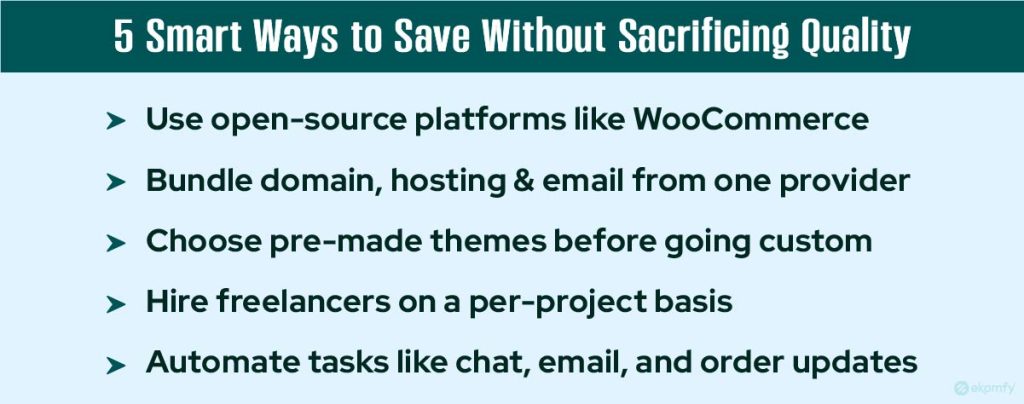
Yes, it absolutely is. Ecommerce is one of the most exciting and profitable spaces to enter in 2025. But success starts with preparation. Now that you know how much it really costs to build an online store in 2025, you can plan smartly, spend wisely, and avoid costly mistakes. Whether you’re working with $1,000 or $50,000, there’s a path forward that fits your budget and goals.
Ready to build your dream online store without overspending? Let Ekomfy turn your vision into a high-performing ecommerce site designed to fit your budget and scale with your goals
Frequently Asked Questions (FAQs)
Can I build an online store for free in 2025?
You can use free platforms like WooCommerce, but you’ll still need to pay for hosting, a domain, and essential features.
What’s the cheapest way to launch an ecommerce site this year?
The most affordable option is to use Shopify Basic or Wix, along with a free theme and manual setup. This can cost as little as $500.
How long does it take to develop a fully functional online store?
A DIY store can be built in 2–7 days. Custom stores usually take 4–12 weeks, depending on complexity.
Do I need to hire a developer for a small store?
Not necessarily. Platforms like Shopify and Wix are ideal for beginners. But for advanced features, a developer can be helpful.
What are the hidden costs most people miss when starting?
Recurring app/plugin fees, transaction costs, ongoing marketing, site maintenance, and third-party integrations often get overlooked.

